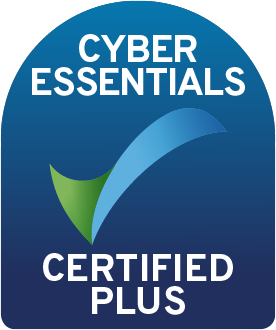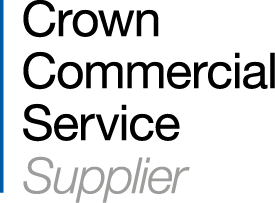Budgets are tight, the economy is unpredictable, and organisations are under significant pressure to cut costs while still investing in growth and employee development. Although L&D plays a vital role in upskilling employees, improving performance and driving business outcomes, business leaders are looking to cut down on costs, and that could include L&D.
One of the most significant investments you can make to transform your L&D strategy is investing in an LMS, but delivering a quality L&D programme with an LMS comes with a price tag. So, how much does an LMS cost in 2025, and how can you be sure you're getting the best value and ROI? Understanding LMS pricing is key to making a future-proof decision.
If you’re considering implementing an LMS but you’re unsure about cost, read on to find out what goes into determining the true cost of an LMS.
Blog summary
TLDR: A complete guide to LMS pricing in 2025
LMS pricing depends on a range of factors, including whether you choose an open-source or closed-source platform, how your LMS is hosted, and the number of users. Cloud-based solutions often offer more predictable costs, while self-hosting may seem cheaper but comes with hidden technical expenses.
We break down popular LMS pricing models like pay-per-user and flat-rate plans, and reveal common hidden costs such as implementation, upgrades, training, and support.
Get tips on how to maximise ROI and explore Hubken’s transparent pricing approach with Moodle and Totara.
What is an LMS, and why is it worth the investment?
A learning management system (LMS) is a digital learning platform used to manage and measure e-learning and online training. In 2025, modern LMSs go far beyond simple content hosting. They're flexible and intuitive with a wide range of features, from automated reporting to personalised learning pathways.
With an LMS, learning can be carried out anywhere and anytime (even offline using your smartphone), meaning learning can be completed remotely and autonomously. Using an LMS makes it easier than ever to engage learners at scale, with meaningful, personalised L&D that drives real results, making it absolutely worth the investment.
But while the right LMS can revolutionise your L&D, understanding the true cost behind LMS pricing is essential.
What influences LMS pricing?
It's important to know that there's no one-size-fits-all when it comes to LMS pricing. In fact, costs can vary dramatically depending on the platform, how it's hosted, how many users you need to support, configuration, and the level of support you need. These various options make LMS pricing highly flexible, which can be beneficial when adapting to your budget, but potentially confusing during the research phase.
Let's explore some of these options:

Open-source vs closed-source LMS pricing
A key decision you'll need to make when implementing an LMS is whether to choose an open-source or closed-source LMS.
Open-source LMS software allows developers to freely modify the code. For a business or organisation, this offers more flexibility as areas of the platform can be customised to suit their needs. What's more, with open-source platforms, there's no licensing fee. But don't be misled, this doesn't mean the platform comes with no cost, you'll still need developers or technical staff to manage hosting, configuration, maintenance, and updates.
On the other hand, a closed-source LMS is owned by the developers and can only be modified by them unless agreed otherwise; to use this type of LMS, you’ll need to pay a license fee. While the upfront cost may be higher, most closed-source LMSs include regular updates and services, which means many organisations find that closed-source LMS pricing delivers better value over time, particularly when internal resources are limited.
LMS hosting costs: Self-hosting vs cloud-based
Another major factor in LMS pricing is how the system is hosted.
Self-hosting
When a business or organisation chooses a self-hosted LMS solution, they will install and maintain the software on their own server. Although this can initially present itself as the cheaper option, as there is no need to pay for a third-party LMS provider, there are other costs to factor in.
Self-hosting gives you full control over the system but requires server infrastructure, security management and an in-house IT team. While the software may be free (especially for open-source platforms), the cost of maintaining, updating and securing your LMS can quickly add up.
Cloud-based LMS
Cloud-based LMS solutions are hosted on the server of an LMS vendor or service provider. Although this option will come at a cost, there is no requirement for in-house technical experts manage the system. While this may seem more expensive upfront, cloud-based LMS pricing is often more predictable and scalable, especially for growing organisations.
With a fully hosted and managed cloud-based solution or SaaS (Software as a Service) solution, you will benefit from a whole host of additional factors. Cloud LMS vendors typically bundle in extras like automatic updates, user support, security compliance and data backups. For many organisations, these built-in services justify the cost and help avoid the hidden expenses that come with self-hosting.

Understanding LMS pricing models
LMS pricing models will vary from vendor to vendor.
Many LMS pricing models look at the number of users who will be accessing the platform, meaning the more users you have, the more expensive it will be. This pay-per-user model can work well for smaller teams or organisations with seasonal training patterns, but if your user numbers fluctuate, it’s worth discussing prior to signing a contract whether you can add more users mid-contract.
Others offer flat-rate LMS pricing, where you pay a fixed amount regardless of how many users are on the system. While this model provides predictability, it can be more expensive if you're a smaller organisation with a limited number of learners.
Hidden costs in LMS pricing
There is a lot that goes into determining the true cost of an LMS, and while some of the upfront costs, such as hosting or license fees, are transparent, there are plenty of additional costs that may only become apparent once an LMS has already been implemented.
To help businesses and organisations gain a better understanding of these additional costs, we put together a comprehensive LMS pricing guide using our years of expert industry knowledge. Our eBook ‘The Hidden Costs of Buying an LMS’ can be downloaded here.
So, how much does an LMS cost when you take some of these ‘hidden costs’ into account? Let’s explore some of the points taken from our eBook, below.
Implementation
If you have opted for a cloud-based solution, implementation should be a much easier process as the set-up of your LMS will be carried out by your vendor’s implementation team. However, there may be additional costs to consider, as the price of this may vary depending on whether any special features or add-ons need to be purchased in order to make the LMS work best for you. Ensure that you discuss this with your vendor prior to the work being carried out.
Upgrade fees
As your business grows, you may find you want to upgrade your LMS with additional features or user bandwidth. Make sure your LMS provider will be able to upgrade your LMS when the time comes and find out whether there will be additional costs involved. At Hubken, we don't believe you should have to pay a premium to keep up with the latest tech; that's why upgrades are included with our Totara and Moodle solutions.
Mandatory training
No matter how tech-savvy your admin team are, they will likely benefit from some training on how to use your new LMS. Although most vendors will include some basic training in the standard package, you may want to invest in some additional training to ensure that your team can get the best out of your LMS pricing and ensure a strong ROI by making the most of all the features and functionality.
Support costs
As mentioned above, opting for a fully hosted LMS means you will benefit from support hours and resources from your LMS vendor. Although some form of support will be included as standard, you may have to factor in additional support costs if, for example, an issue presents itself outside of standard working hours. Be sure to have a conversation with your vendor ahead of time to find out what these additional costs could look like, as a lack of support can contribute to the failure of an LMS project.
For further insight on some of the hidden costs you should be looking out for when determining the true cost of LMS software, read our eBook here.
Getting the best value from LMS pricing
The most important step in choosing the right LMS isn’t just comparing costs; it’s comparing value. That means looking beyond the price tag and considering long-term ROI.
Will the LMS save your team time and reduce manual processes? Will it help improve learner engagement and outcomes? Does it include support and training to help you maximise the platform?
In 2025, the best LMS providers are focused on delivering full-service packages that bundle hosting, support, training and scalability into a single, transparent fee. This approach helps clients avoid nasty surprises and get up and running faster.
Hubken LMS pricing
At Hubken, we offer both Moodle and Totara LMSs, and all of our LMS solutions come wrapped in our HubkenCore package as standard. Our cloud-based SaaS solutions are securely hosted, and we offer unlimited support hours and a video training library. Our HubkenCore package ensures that our LMS solutions offer the best value for money; you can find out more about it here.
We believe LMS pricing should be transparent and predictable. That’s why we offer pricing packages tailored to your needs, whether you're supporting 100 users or 10,000.
Want to know more about the cost of our LMS pricing options? We put together a comprehensive pricing guide for Moodle and Totara. Read our guide to Moodle pricing here or find out how to get the very best value from a Totara solution here.

Explore HubkenCore – our unique SaaS LMS offering
Ready to see how our new LMS bundled solution is revolutionising how you purchase an e-learning solution?
.png?width=1080&height=150&name=Slim%20blog%20CTAs%20(22).png)
.png?width=1080&height=150&name=Slim%20blog%20CTAs%20(12).png)
.png?width=1080&height=150&name=Slim%20blog%20CTAs%20(28).png)



